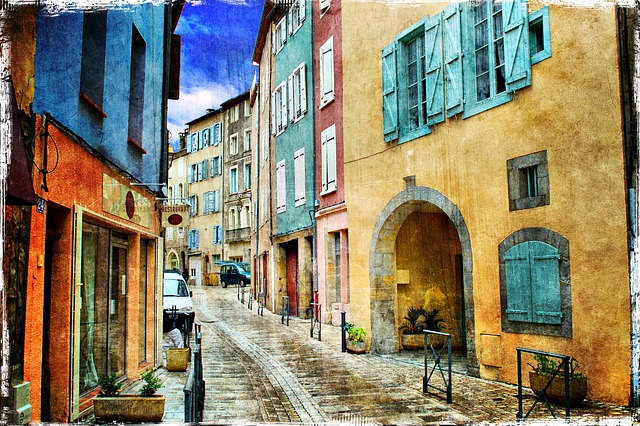The world of interior design is vast, drawing from various elements to craft spaces that are both functional and aesthetically pleasing. One such powerful element, often the unsung hero of design, is the incorporation of art and photography prints.
These additions transform spaces, infuse personality, and connect homeowners to their surroundings on a deeply personal level. In this article, we dive into 20 creative ways to incorporate art and photography prints into your interiors, followed by an exploration of their profound impact on the spaces they inhabit.
1. Gallery Wall
Perhaps the most popular method, gallery walls allow for a curated mix of art and photographs. Use varying frame sizes, shapes, and even frame colors to create an eclectic yet harmonized display.
2. Oversized Statement Piece
Hang a large, dramatic art or photography piece over a sofa, bed, or mantle. This becomes the focal point of the room and dictates the color and design scheme around it.
3. Floating Shelves
Instead of hanging, art pieces can be propped up on floating shelves, allowing flexibility to change out and rearrange pieces as desired.
4. Thematic Arrangement
Arrange prints around a specific theme, such as nature, abstracts, or portraits, for a cohesive look.
5. Art Ledges
Similar to floating shelves, but with a front lip, art ledges allow prints to be layered and overlapped, providing depth and dimension.
6. Incorporate Lighting
Use picture lights or directed lighting to highlight specific prints, adding drama and drawing attention.
7. Frameless Presentation
Use acrylic or glass mounts for a modern, minimalistic look, allowing the artwork or photograph to shine without a frame’s distraction.
8. Layer Artwork
By positioning smaller prints in front of larger ones, you create an intriguing visual layer and depth.
9. Room Dividers
Use large printed canvases as room dividers in open-plan spaces, providing both art and functionality.
10. Transitional Spaces
Utilize hallways and staircases by hanging a sequence of art or photographs, encouraging movement and exploration.
11. Mixed Media
Intermix art prints with other wall decor elements like mirrors, clocks, or sculptures for a diverse wall collage.
12. Grid Display
Arrange a set of similar-sized prints in a grid format for a clean, geometric design.
13. Eclectic Mix
Combine vintage photographs with contemporary art, or black and white prints with vibrant paintings, for a dynamic contrast.
14. Interactive Installation
Incorporate chalkboard or whiteboard frames, allowing guests to contribute and change the art’s context.
15. Bathroom Art
Who says bathrooms can’t have art? Waterproof frames or canvases can introduce elegance to often overlooked spaces.
16. Above The Bookshelf
The space above bookshelves can be the perfect place to display panoramic or horizontal prints.
17. Furniture Pairing
Align the color scheme or theme of the print with the furniture below it, creating a harmonious look.
18. Ceiling Display
Unexpected but delightful, hang artwork or lightweight prints on the ceiling for a unique perspective.
19. Sliding Panels
Install a track system with sliding panels. This allows for a rotation of art pieces or revealing hidden storage or a television behind.
20. Integrated with Plants
Combine prints with indoor plants. For instance, hang prints between wall-mounted planters or have vine plants drape around frames.
The Impact of Art and Photography in Interior Design
Art is more than a decorative element in our homes; it tells stories, captures moments, and becomes the soul of a space. When chosen thoughtfully, art and photography prints can profoundly influence our emotional connection to a room.
Resonating Emotions: A well-selected piece can invoke powerful emotions, bringing warmth, nostalgia, motivation, or even calm to an area. For instance, a tranquil seascape in a bedroom might promote relaxation, while a lively cityscape in a study might energize.
Creating Conversations: Art is subjective. A unique piece can spark conversations, allowing homeowners to share personal stories or discuss interpretations. For visitors, it becomes an insight into the homeowner’s character and preferences.
Enhancing Aesthetics and Architecture: Art can emphasize the architectural features of a space. For instance, an elongated painting can draw attention to high ceilings, while strategically placed art can divert attention away from less attractive areas.
A Reflection of Time and Trends: Like fashion, the art we display can reflect the times we live in or personal milestones. An art collection can evolve, symbolizing various phases of life or shifts in personal style.
The Power of Personalization: In a world of mass-produced furniture and decor, art remains a powerful tool for personalization. The joy of finding a piece that speaks to you, or the pride of displaying your own photographs, adds an unparalleled personal touch.
Incorporating art and photography in interior design is more than mere decoration. It’s an amalgamation of personality, memories, and design. In this era of cookie-cutter home styles, art breathes life, making houses into homes, spaces into sanctuaries. Whether you’re an art aficionado or just starting your collection, the importance of art in interior design is undeniable. Embrace it, and let your walls tell your story.
Conclusion
The amalgamation of art and interior design is a timeless relationship, offering infinite possibilities to create uniquely personalized spaces. As we’ve explored, the ways to incorporate art and photography prints are as diverse as the prints themselves.
They not only enhance the visual appeal but also elevate the emotional resonance of a room, making it a true reflection of its inhabitants. As you embark on your own interior design journey, let art and photography be your guiding star, ensuring every corner of your space tells its own unique, compelling story.

Recent Comments